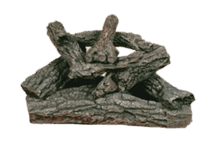"Forward-burning Hearth"

Distributors
Our company works with reputable distributors. Please review their websites and contact us with any inquiries or to discuss potential partnerships." #distributors #partnerships #reputation
Explore our distributors' YouTube channels for a glimpse of our services.

Upgrade Your Home with the Ei29LCD Premium Electric Insert and Fireplace by Regency

Introducing Our Latest Addition: Electric Fireplace Distributors!
About Us
Gas Galore: Founded June 2004
Gas Galore Fireplaces & More, owned by Warren Blake, offers a comprehensive range of services including licensed gas line installation and obtaining permits and inspections. We are fully insured for your peace of mind.
D & S Utilities works along with Gas Galore, installing gas lines and obtaining permits and inspections.
We (Warren Blake & Gerald Davis) are licensed and insured Master Plumber/Gas Fitters in Maryland, the District of Columbia, Virginia, and WSSC (Washington Suburban Sanitary Commission)
We are a one-stop shop; we can handle everything that is required to do a complete install. No need to contact others to complete the job. Gas Galore can take care of everything.
Call today to discuss your dream of a new Gas Fireplace. 301-608-3111
FAQ's
When researching gas fireplaces you may find yourself asking over and over again what exactly is the difference between direct venting and vent free, and how does it all work. Go ahead and read below to find out all the details about direct vent fireplaces and vent free fireplaces. As always contact us directly for more clarification and questions!
Why do you NOT want to install a vent free fireplace
What are the dangers of using vent-free gas logs?
A direct-vent fireplace will use outside air for combustion, thereby increasing efficiency and eliminating the need for opening windows Photo courtesy of Hearthmasters, Inc.while its in use, says Padgitt.
Many homeowners end up asking chimney sweeps to take out their vent-free gas logs due to problems they find associated with the appliance. Often, a homeowner will report a horrible odor when the logs are in use, water running down the windows and walls, stains and soot, mold and mildew issues, unexplained headaches and being ill while in the house while using the logs.
When burning gas, several by-products of combustion are produced: Carbon monoxide, carbon dioxide, nitrogen dioxide, formaldehyde and significant quantities of water.
Direct Vent Fireplaces
Direct vent fireplace venting uses a coaxial pipe system (small pipe within a large pipe) and draws combustion air from the outside through the outer pipe. Some of its features are: The inner pipe vents the exhaust while the outer pipe draws in the outside air, can either vent out the top or out the back, for installation versatility, can vent horizontally through an outside wall, or vertically through the roof .- no chimney required!, convenient to install, space-saving depth. but requires finishing such as a mantel and surround.
B-Vent / Natural Vent
This type of fireplace venting uses economical B-vent pipe for a chimney. Some of its features are: uses room air for combustion and venting terminates above the roofline (like a furnace), more decorative, but lower efficiencies, zero clearance to combustibles, ideal for locating anywhere in the home where B-vent can be installed.
Vent-Free / Ventless
A vent-free gas fireplace operates without a chimney, flue or vent, so you can install one just about anywhere. Modern vent-free gas fireplaces: inexpensive and have low operating costs, 99% energy efficient provide warmth during power outages, do not exceed 40,000 Btu/hr of heat output.


